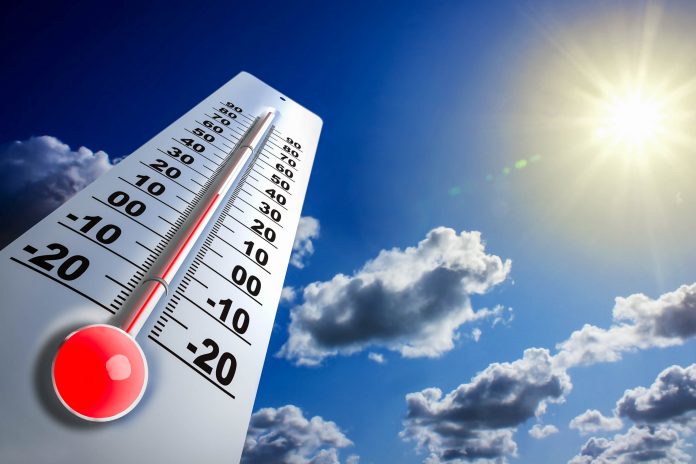Informationen zu Klima und Wetter im Oman mit detaillierter Beschreibung der besten Reisezeit, Klimatabellen, Temperaturangaben und Regentagen.
Inhaltsverzeichnis
Die wichtigsten Klimazonen im Oman
Das Klima im Oman kann grob in vier unterschiedliche Zonen eingeteilt werden.
Die Küstenregion im Norden

In der Küstenregion im Norden (Muscat, Sur, Batina Ebene, Sohar) gibt es wenig Niederschlag und nur geringe Temperaturschwankungen zwischen Tag und Nacht. Im Sommer liegen die Tageshöchstwerte durchschnittlich zwischen 35 °C und 40 °C, im Winter bei angenehmen 22–25 °C. Man kann das ganze Jahr bei Temperaturen zwischen 24 °C (Winter) und 31 °C (Sommer) im Meer baden – perfekt für einen Bade-Urlaub im Oman.
Das Hadschar Gebirge
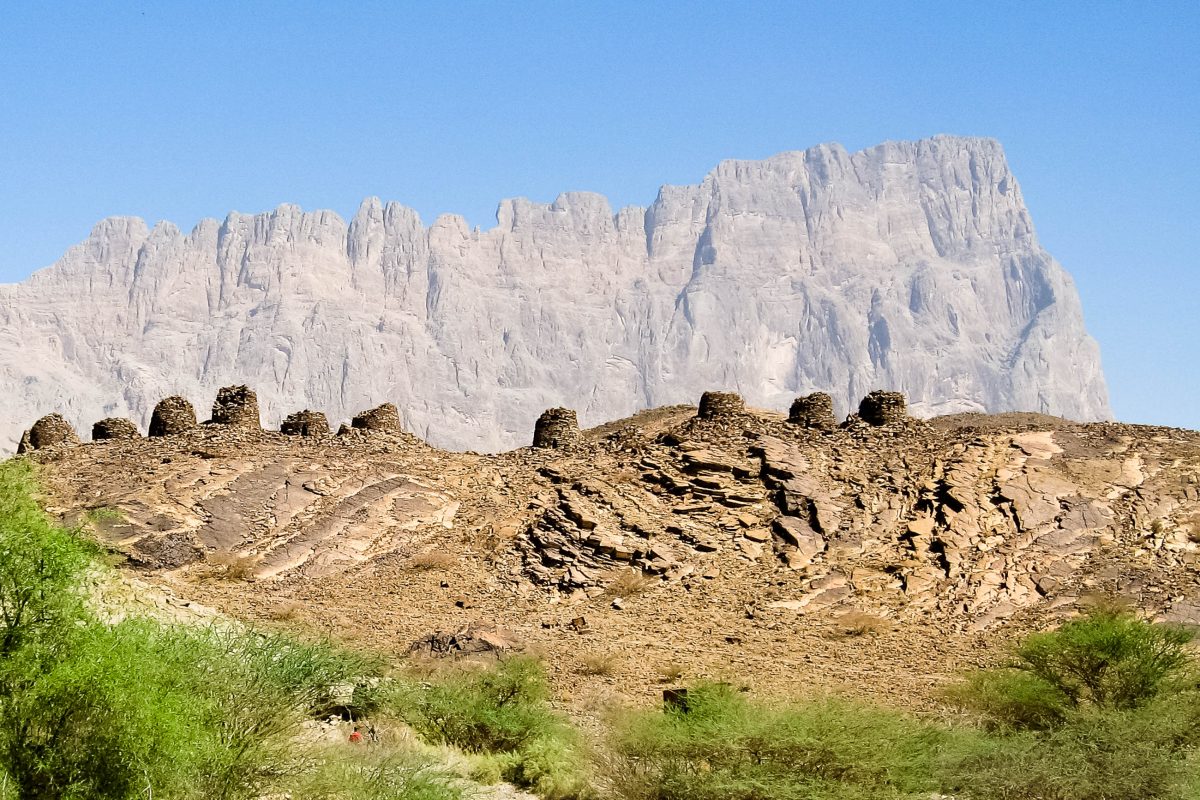
Im Gebirge, mit Berggipfeln um die 3.000 Meter gibt es warme Sommer und kühle Winter. In den Wintermonaten ist in den höheren Gebirgslagen nachts auch regelmäßige mit Minusgraden zu rechnen. Im Sommer steigen die Temperaturen tagsüber auf durchschnittlich bis zu 30 °C, in der Nacht kühlt es aber immer stark ab. Warme Kleidung ist im Hadschar Gebirge also immer notwendig.
Das Landesinnere – die Wüsten
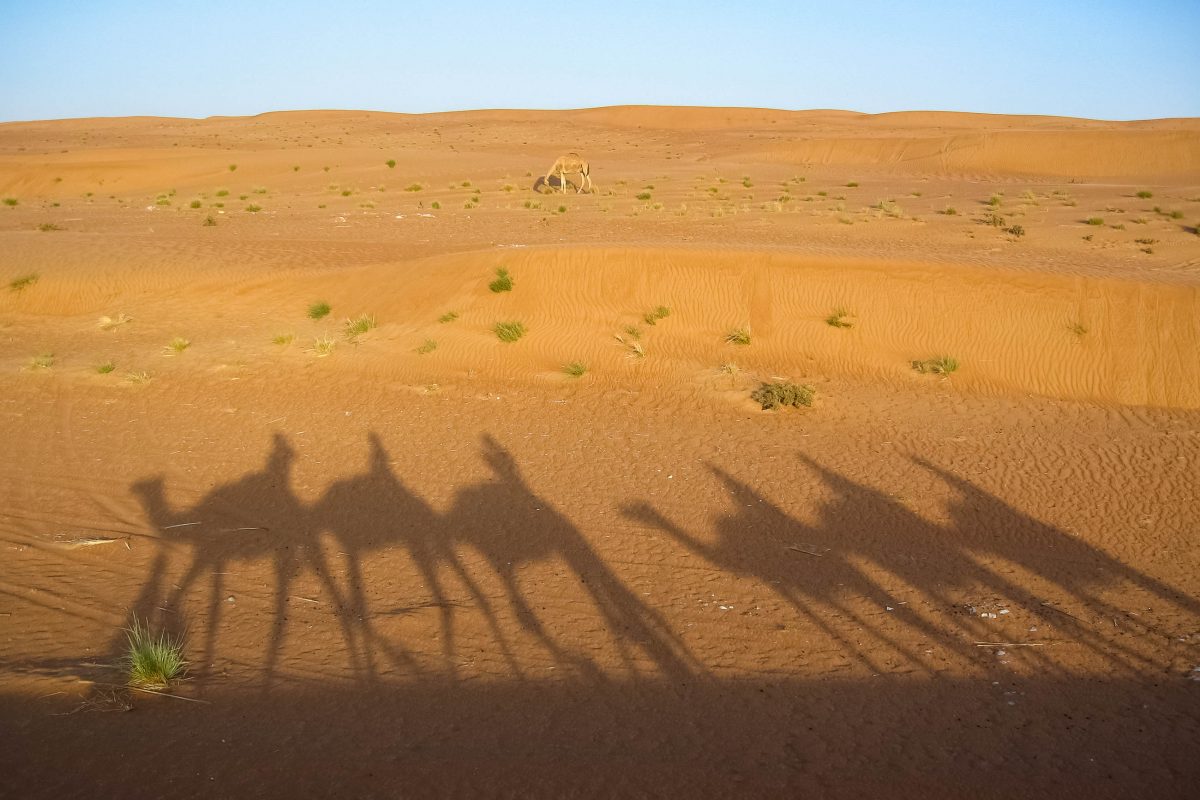
Das Landesinnere des Oman ist Großteils Wüstengebiet. Hier finden sich auch die Wüsten Ramlat al Wahiba (Wahiba Sands) und die Rub al-Khali (Leeres Viertel). Die Temperaturen sind im Winter mit 25 °C bis 30 °C angenehm, im Sommer klettert das Thermometer aber oft auf unerträgliche 50 °C oder mehr.
Das sind die Temperaturspitzenwerte im Oman. Nachts sinken die Temperaturen wie in allen Wüstengebieten sehr stark und es kann im Winter richtig kühl werden.
Der Süden – die Provinz Dhofar
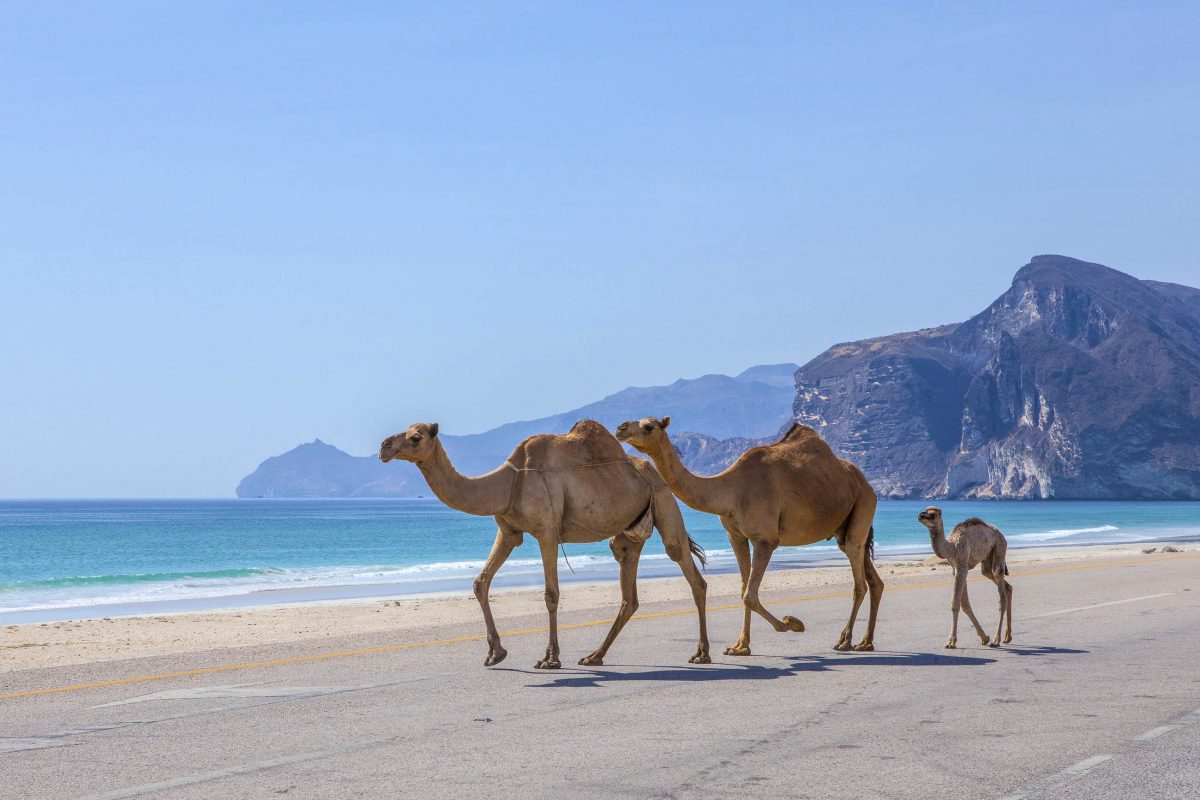
Die Südliche Provinz Dhofar (Salalah) hat das ganze Jahr tropisches Klima. Es ist warm und feucht. Die Temperaturen bewegen sich zwischen 20 °C und 30 °C . Zwischen Juni und September wird die Region von Monsunausläufern gestreift.
In dieser Zeit gibt es dichten Nebel und Nieselregen und die Temperatur liegt um die 25 °C. Dadurch ergrünt die ganze Provinz. Dies ist die sogenannte „Kharif Season“ die bei Besuchern von der arabischen Halbinsel sehr begehrt ist. Während der Monsunzeit kann im Süden des Omans wegen der dann herrschenden starken Strömungen nicht im Meer gebadet werden.
Die wärmsten, kühlsten, feuchtesten, trockensten Monate
Wärmster Monat im Oman: Juni
Kühlster Monat im Oman: Jänner
Feuchteste Monate im Oman: Jänner, Februar (in der Region Dhofar im Süden: Juli und August)
Trockenste Monate im Oman: Mai bis September (ausgenommen die Region Dhofar im Süden)
Beste Reisezeit im Oman
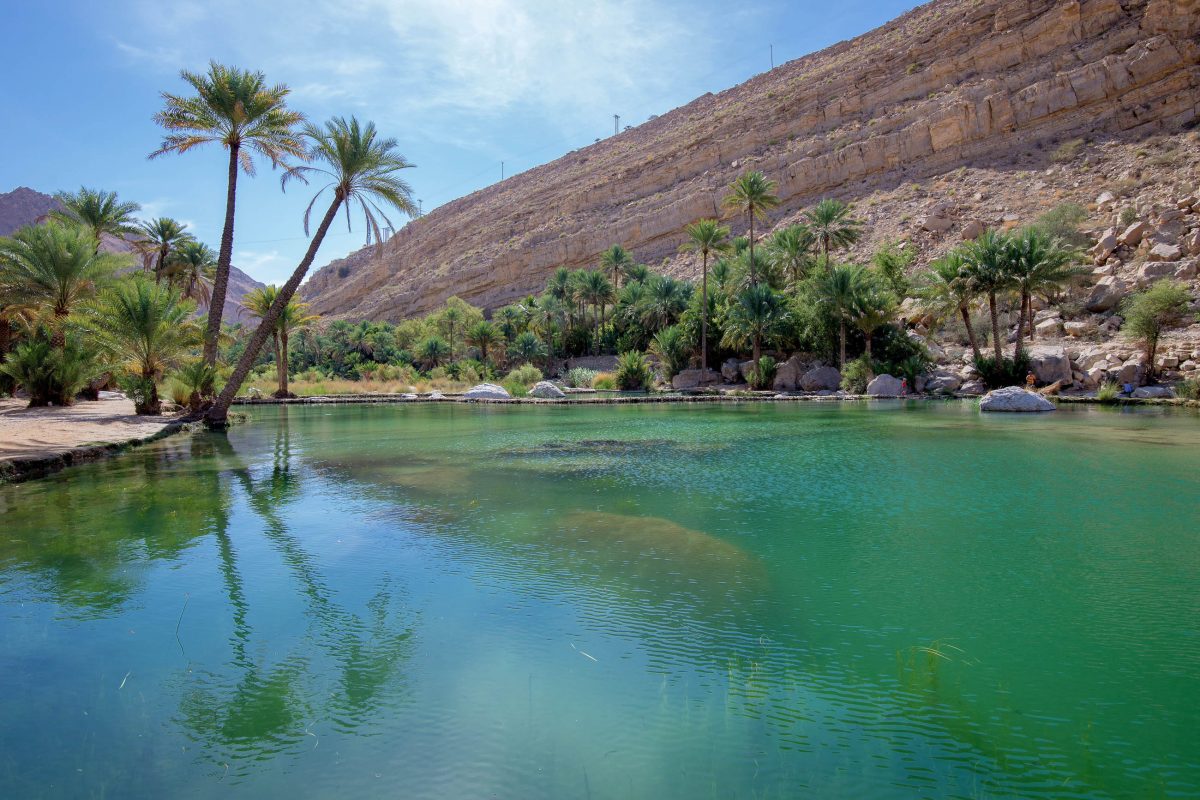
Die beste Reisezeit im Oman sind die Monate Oktober bis März. Die Tagestemperaturen sind erträglich, das Wasser ist angenehm warm und in der Nacht kühlt es auf annehmbare Temperaturen ab.
Grundsätzlich kann der Oman ganzjährig bereist werden. Von April bis September erreichen die Temperaturen aber häufig mehr als 40 Grad Celsius und sinken auch nachts meist nicht unter die 30 Grad Marke. Nur in wenigen Gebieten des Omans wie auf der Insel Masirah, in der Region Dhofar um Salalah im Süden oder im Hadschar Gebirge sind diese Temperaturen halbwegs erträglich.
Klimatabellen Oman
Klimatabelle Muscat (Maskat)
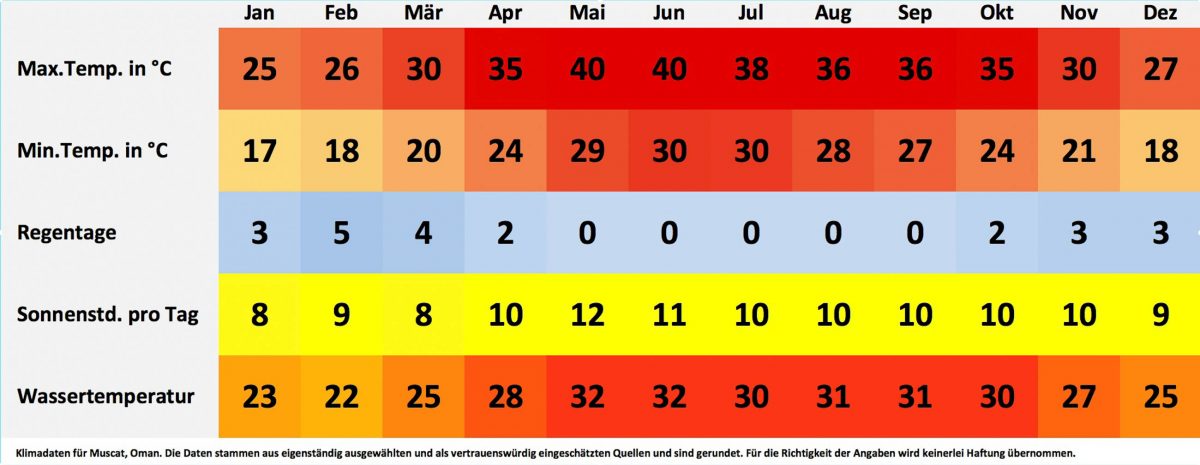
Klimatabelle Sur
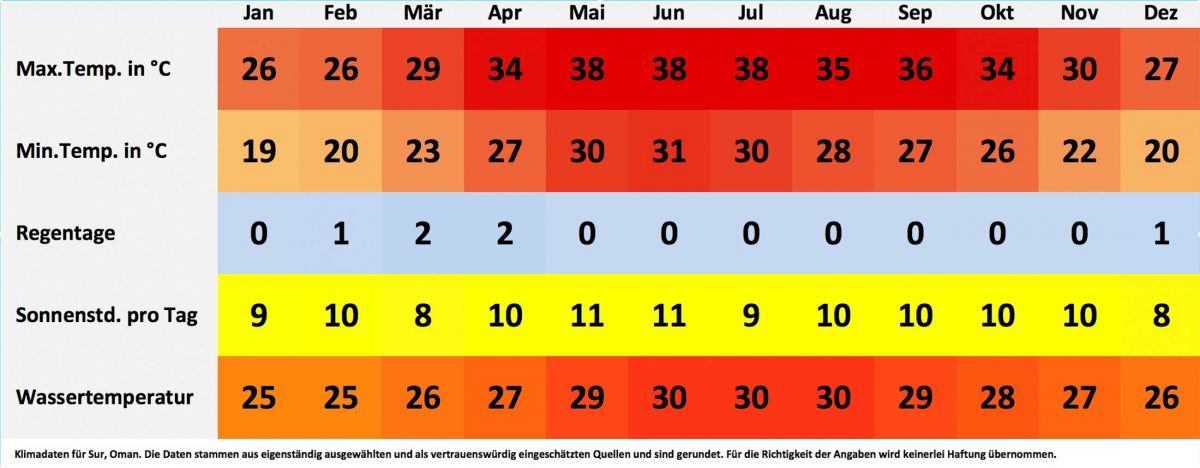
Klimatabelle Masirah

Klimatabelle Salalah (Dhofar)

Klimatabelle Khasab (Musandam)


